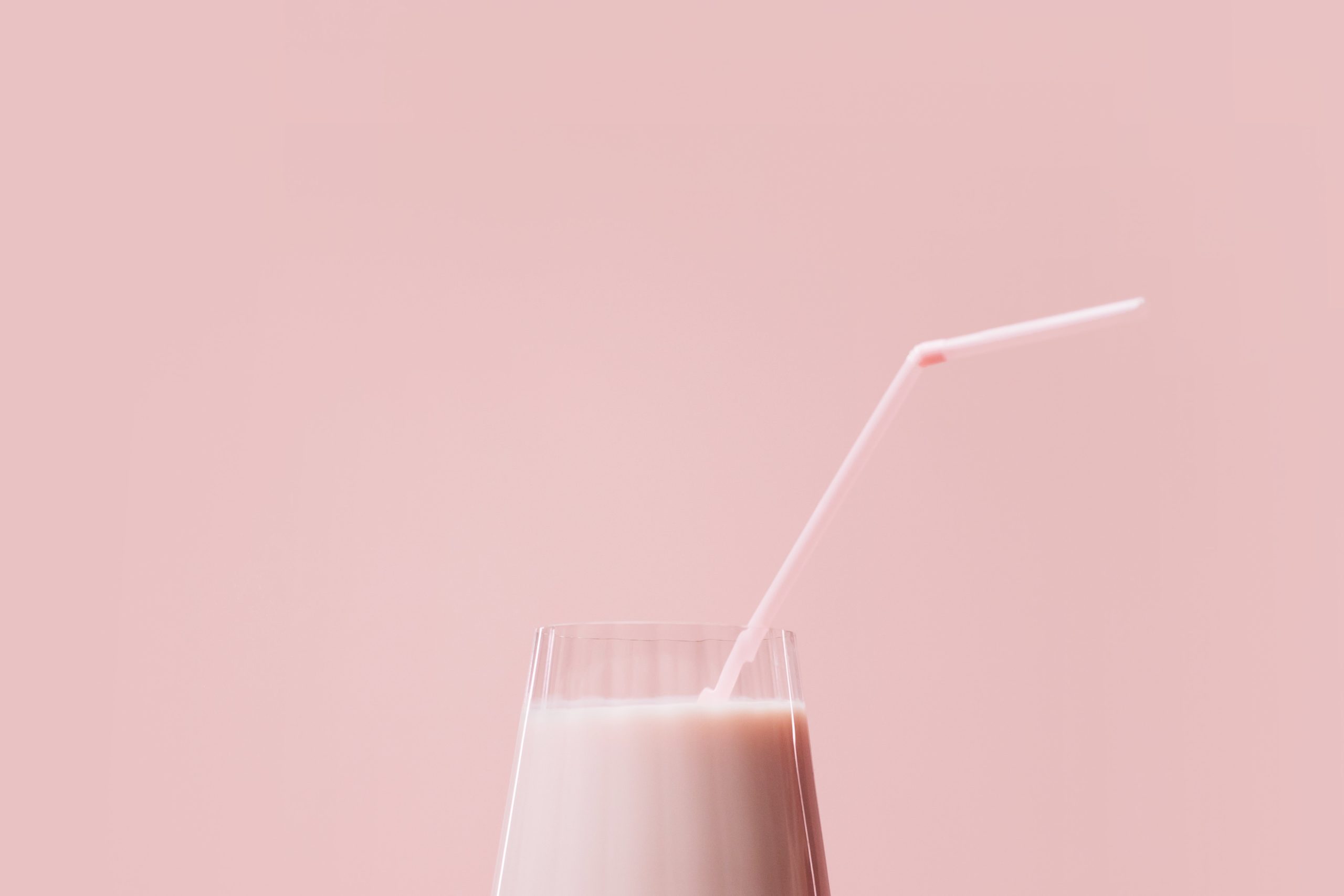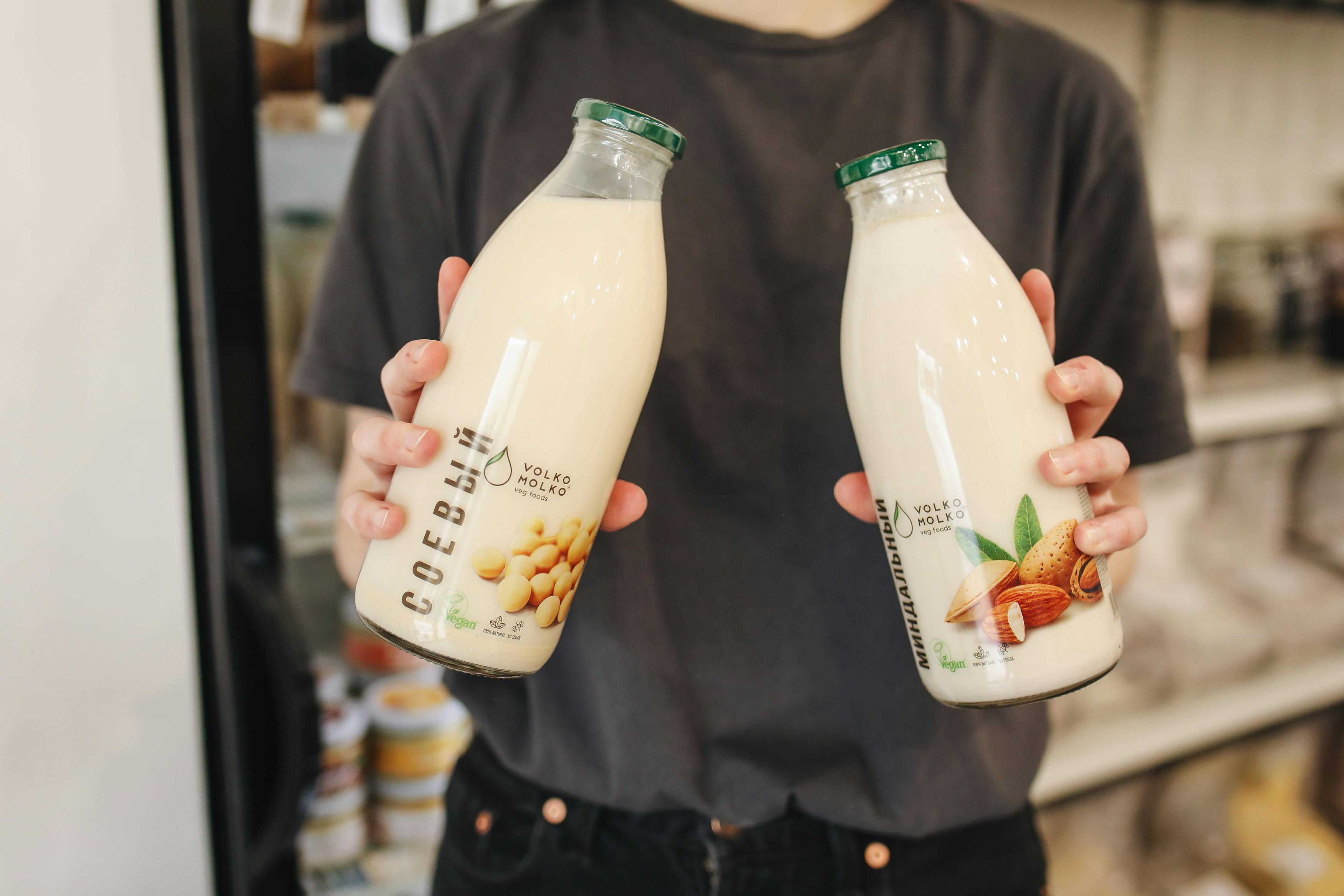Ode to Oat Milk: The Environmental Benefits of Dairy Alternatives

Now offered in Dunkin and Starbucks, non-dairy milks are becoming increasingly popular and accessible nationwide. While I may not be part of the lactose intolerant 65% of the population, I can attest that oat milk specifically has been a game-changer in my day-to-day routine. I made this transition primarily based on taste preferences, but learning about the environmental benefits of my favorite beverage has only reaffirmed my love for it.
Whether you chug milk by the glass or just opt for a splash in your coffee, understanding environmental and health impacts can be useful when choosing a dairy alternative. Here are some aspects to consider as we peruse our grocery store aisles.
Cow’s Milk
In addition to causing stomach aches for those with lactose intolerance, standard dairy milk poses several environmental issues. 3 kg of greenhouse gases, mainly methane, are released for every liter produced of cow’s milk. According to BBC news, producing one glass of milk every day for a year would utilize 650 square meters of land, the equivalent of two tennis courts. This striking amount is also 10x what it would take to produce the equivalent amount of oat milk, which I will discuss more in depth below.
This harsh reality has received more media coverage in the last few years, leading to a drastic increase in the market for dairy alternatives. In 2017, dairy milk sales shockingly fell at an average of 12%, while plant-based milk sales skyrocketed by 36%. The transition is largely due to increased public awareness, and is having noteworthy positive effects on our planet.
Almond milk

Emitting the least greenhouse gases and requiring less raw materials than other dairy and non-dairy milk alternatives, almond milk is often thought of as an eco friendly option. Yet despite its smaller carbon footprint, almond milk production requires more water than any other plant milk. It takes about 15 gallons of water to produce 16 almonds, and over 80% of the world’s almonds are grown in drought-prone California. Diverting such large quantities of water for almond production can have lasting negative effects on both natural landscapes and biodiversity.
Almond milks’ flavor versatility, from vanilla to unsweetened, makes it appeal to a wide variety of people. My personal favorite is Califia Farms’ coconut almond milk. Although the option is better than traditional cow’s milk, its high water consumption means it’s still quite harmful to the environment. Let’s check out our next highlighted milk and see what’s what.
Oat Milk

Last, but certainly not least, oat milk. When it comes to oat milk, I will admit I am a bit biased. Oat milk is a great option that those with both lactose intolerance, or with nut allergies, could still enjoy. In addition to its creamy consistency and subtle sweetness, oat milk offers several environmental benefits that should also be considered.
Oat milk requires only one-eighth of the amount of water that almond milk takes to produce, with 1,929 gallons of water per pound of almonds compared to 290 gallons of water per pound of oats. My personal favorite brand, Oatly, is also using its platform to make its waste process more sustainable. Partnered with local providers, Oatly is sending used and discarded oat kernel hulls to farms and biogas facilities as opposed to landfills. By turning its discards into fertilizer growth and animal feed, Oatly is furthering its mission to lessen its carbon footprint.
This alternative also offers benefits health-wise. Keep in mind that everyone is different, so one should always consult their doctor when they have questions regarding a change to their diet. That being said, oat milk has twice the amount of dietary fiber as cow’s milk and is especially dense in beta glucan, a fiber that strengthens the immune system. This super milk also has zero cholesterol; replacing every serving of standard dairy milk with oat milk could reduce our daily cholesterol intake by 24mg.
So, now what?
While oat milk seems to have the most environmental benefits, there is not one right and wrong answer when it comes to dairy milk alternatives. From hemp milk to coconut milk to rice milk, the choices are endless. Educating ourselves on the various pros and cons of different products can help us become more informed consumers, and to make decisions that align with your own environmental values. It can also be helpful to check out websites of the brands you want to support, to see what measures they are taking to stay green.


I have read so many posts about the blogger lovers howeverthis post is really a good piece of writing, keep it up.
I have read so many posts about the blogger lovers however this post is really a good piece of writing, keep it up
whoah this blog is wonderful i really like reading your articles. Keep up the great paintings! You realize, a lot of people are hunting round for this info, you could help them greatly.
Great selection of modern and classic books waiting to be discovered. All free and available in most ereader formats. download free books
https://www.philadelphia.edu.jo/library/directors-message-library
whoah this blog is wonderful i really like reading your articles. Keep up the great paintings! You realize, a lot of people are hunting round for this info, you could help them greatly.
I have read so many posts about the blogger lovers however this post is really a good piece of writing, keep it up
https://www.philadelphia.edu.jo/library/directors-message-library
whoah this blog is wonderful i really like reading your articles. Keep up the great paintings! You realize, a lot of people are hunting round for this info, you could help them greatly.
Wonderful illustrated information. I thank you about that. No doubt it will be very useful for my future projects. Would like to see some other posts on the same subject!
Thank you so much for ding the impressive job here, everyone will surely like your post.